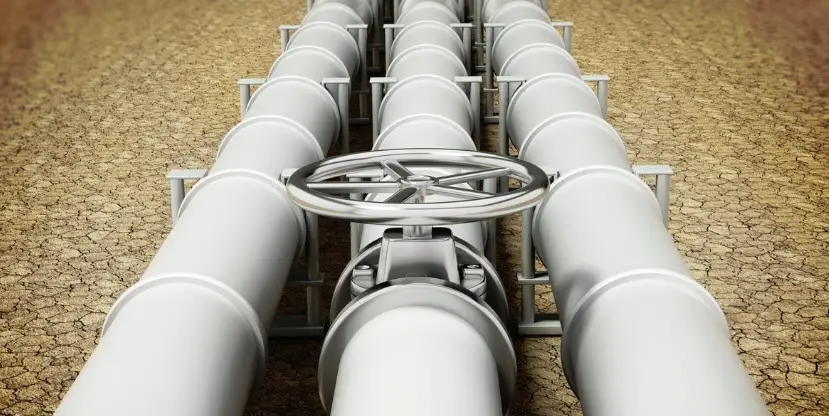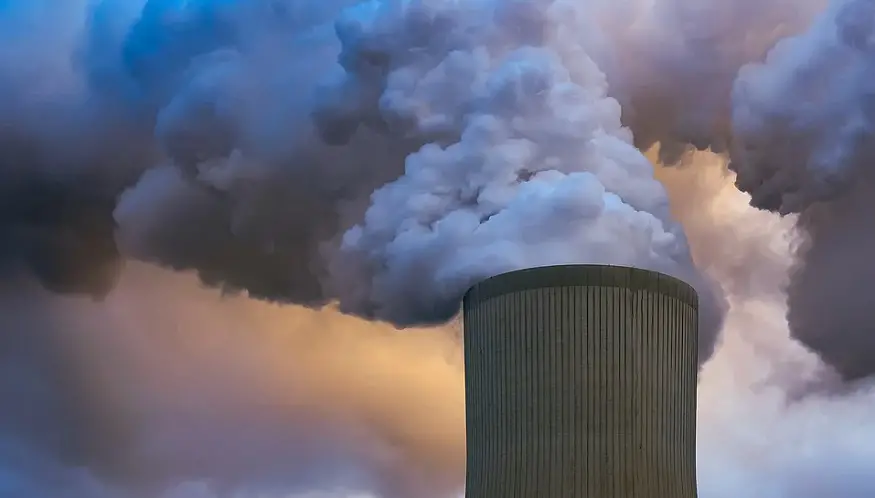
New device separates hydrogen from natural gas when the two gases are blended in pipelines
December 16, 2020LOS ANGELES, Calif.—Dec. 16, 2020—With clean hydrogen gaining recognition worldwide as the carbon-free fuel capable of making a significant contribution to addressing climate change, Southern California Gas Co. (SoCalGas) today announced it will field test a new technology that can simultaneously separate and compress hydrogen from a blend of hydrogen and natural gas. At scale, the technology would allow hydrogen to be easily and affordably transported via the natural gas pipeline system, then extracted and compressed at fueling stations that provide hydrogen for fuel cell electric vehicles (FCEVs). Created by Netherlands-based HyET Hydrogen, the technology is designed to provide pure highly-compressed hydrogen wherever a natural gas distribution system exists. A video illustrating the technology may be found below article.
SoCalGas also recently announced a program to study blending hydrogen into its natural gas pipelines. If approved by regulators, the program would be the first step toward establishing a statewide standard for injecting hydrogen into the natural gas grid.

“This innovative technology could be a game-changer, allowing hydrogen to be distributed to wherever it is needed using the natural gas grid,” said Neil Navin, vice president of clean energy innovations at SoCalGas. “As demand increases for zero-emissions vehicles such as fuel cell electric cars, California will need thousands more hydrogen fueling stations—and this technology may help make that possible.”
“We are excited to deploy our newest technology in collaboration with SoCalGas,” said Alexis Dubois, director of HyET Hydrogen USA. “Our gas separation system is designed to allow hydrogen to be transported across long distances affordably using existing natural gas pipelines. With this technology, hydrogen can become a commonly used fuel for transportation, industrial applications and more.”
“Hydrogen will be an important part of our clean energy future, and exciting new technologies like this will pave the way for zero emissions transportation in California,” said Sen. Bob Archuleta (D-Pico Rivera). “I am fighting for investments in both hydrogen infrastructure and clean transportation programs in the state Legislature and will continue to do so. I am excited that the testing of this cutting-edge innovation will take place in the 32nd Senate District and I look forward to continuing to work with SoCalGas as we pursue our clean energy goals.”
“This is innovative technology,” said Bill Elrick, executive director of the California Fuel Cell Partnership. “It may provide a unique and strategic way to distribute large volumes of hydrogen fuel, helping decarbonize the transportation sector.”
The new technology, called Electrochemical Hydrogen Purification and Compression (EHPC), works by applying an electrical current across a hydrogen-selective membrane to allow only hydrogen to permeate it while blocking the natural gas components. Continuously applying the electrical current builds up and pressurizes the hydrogen.
To test the technology, SoCalGas will blend hydrogen, in concentrations from 3 to 15%, with methane, the primary component of natural gas. That blend of gases will then be injected through a simulated natural gas pipeline testing system into the EHPC system to continuously extract and compress the hydrogen at a rate of 10 kg per day. SoCalGas’ testing will provide performance data that will enable fine-tuning and optimization of the EHPC system to accelerate scaling up the technology. Within the next two years, the EHPC technology is expected to be scaled to produce 100 kg of hydrogen a day or more from a single EHPC system, enough to fill 20 fuel cell electric vehicles.
The project is scheduled to begin in March at SoCalGas’ Engineering Analysis Center in Pico Rivera, California and slated to be complete by the third quarter of 2021.
About SoCalGas
Headquartered in Los Angeles, SoCalGas® is the largest gas distribution utility in the United States. SoCalGas delivers affordable, reliable, clean and increasingly renewable gas service to 21.8 million customers across 24,000 square miles of Central and Southern California, where more than 90 percent of residents use natural gas for heating, hot water, cooking, drying clothes or other uses. Gas delivered through the company’s pipelines also plays a key role in providing electricity to Californians— about 45 percent of electric power generated in the state comes from gas-fired power plants.
SoCalGas’ mission is to build the cleanest, safest and most innovative energy company in America, delivering affordable and increasingly renewable energy to its customers. In support of that mission, SoCalGas is committed to replacing 20 percent of its traditional natural gas supply with renewable natural gas (RNG) by 2030. Renewable natural gas is made from waste created by dairy farms, landfills and wastewater treatment plants. SoCalGas is also committed to investing in its gas delivery infrastructure while keeping bills affordable for our customers. From 2015 through 2019, the company invested nearly $7 billion to upgrade and modernize its pipeline system to enhance safety and reliability. SoCalGas is a subsidiary of Sempra Energy (NYSE: SRE), an energy services holding company based in San Diego. For more information visit socalgas.com/newsroom or connect with SoCalGas on Twitter (@SoCalGas), Instagram (@SoCalGas) and Facebook.
About HyET Group
HyET Hydrogen, headquartered in Arnhem, The Netherlands, is a leading company in the development and delivery of electrochemical hydrogen processing technologies that enable large-scale implementation of hydrogen transport modalities and high-pressure hydrogen storage. HyET Hydrogen is part of the HyET group that creates solutions to make renewable energy sources commercially viable.
HyET group is focused on large-scale buffering of intermittent renewable energy, such as solar and wind, using high pressure hydrogen.
For more hydrogen fuel updates sign up for our weekly newsletter today!



 HFN News is your leading source for fresh hydrogen and renewable energy updates. Amid the fast-paced growth of hydrogen companies, we provide top-notch news and insights about this exciting sector. Our coverage spans from hydrogen cars to global sustainable initiatives, and we highlight the latest in green jobs and developing hydrogen hubs. We invite you to share your local hydrogen news and explore today’s renewable energy job listings on our site. Thanks for choosing HFN News as your trusted guide to the hydrogen and renewable energy world!
HFN News is your leading source for fresh hydrogen and renewable energy updates. Amid the fast-paced growth of hydrogen companies, we provide top-notch news and insights about this exciting sector. Our coverage spans from hydrogen cars to global sustainable initiatives, and we highlight the latest in green jobs and developing hydrogen hubs. We invite you to share your local hydrogen news and explore today’s renewable energy job listings on our site. Thanks for choosing HFN News as your trusted guide to the hydrogen and renewable energy world!
I have talked with HyET several times at their booths at energy conferences: very fine people and technology.
I wish them and SoCalGas well in this important demonstration. But, we must ask:
1. How may we recover enough of the “green”, high-value, high-purity, electrolytic-source, H2 “champagne” from the “beer” in which it is diffused to supply fuel cell customers at competitive cost ? Once injected into the nat gas pipeline system, the H2 molecules will go everywhere, including where their premium value — above energy content — is only, but significantly, decarbonization of the “pipeline gas”; we’re selling the “fugitive” H2 champagne at CH4 price.
2. Is “four-nines”, i.e. 99.99%, purity of the H2 extracted by EHPC from the [H2 + CH4] pipeline gas adequate for PEM fuel cell customers, primarily fuel cell vehicles (FCV’s) large and small, land, marine, and air ?
3. Are CAPEX and OPEX for the installed EHPC systems, included in the dispensed H2 fuel cost and price, competitive with other systems for gathering, transmission, storage, and distribution of renewables-source H2, including “free” energy storage by “packing” dedicated, high-purity, underground gaseous H2 (GH2) pipelines ?
4. What is the energy cost (kWh per kg H2) for (a) separation of the GH2 from the pipeline gas, and (b) compression of the separated GH2 to 300 to 700 bar range ? How competitive is the cost of this “work” vis-a-vis other strategies and systems ?
5. When (years; total annual service area demand (million metric tonnes (MMT) / year)) will the demand for high-purity “green” H2 exceed the ability of the [blended + EHPC] strategy to supply it, because of (a) upper limit on H2 concentration in extant steel nat gas pipelines, (b) one-third volumetric energy density of GH2 vis-a-vis methane ?
6. Will the investment in EHPC plants be justified, or should pioneering high-H2-utilization regions like California plan instead to invest in new pipeline networks — based on repurposed, relined, extant pipelines, or on new pipelines, immune to HE and HCC — dedicated to gathering, transmission, free “packing” storage, and distribution of DER-source “green” H2 ? See poster from “Windpower 2016”: leightyfoundation.org/wp-content/uploads/WP16-A-1.pdf
7. In year 2050, via the urgent task for total de-carb and de-GHG of the entire human enterprise, given the prospects for integrated, optimized, “green” H2 systems based on GH2 pipelines, what will be the technically and economically optimum allocation of markets and CAPEX among GH2 vis-a-vis electricity systems, i.e. the Grid, as smart and large as we make the latter ? How shall we avoid over-dependence upon and over-investment in the Grid, which may be the obvious, but perhaps suboptimal, vector and strategy ? Shall we begin that comparative whole-systems analysis now, at the continental scale which may be necessary to realize the full value of H2 systems ? Who should collaborate ? Who should lead ?
I thank SoCalGas and HyET for this important R&D&D project, as we “think beyond electricity” to total de-carb and de-GHG-emission for the entire human enterprise, as quickly as we prudently and profitably can.
Enbridge Eneergy ENB and Hydrogenetics HYGS have done this in the past using a huge Electrolizer built by HYGS using excess electricity from wind turbines and converting it to Hydogen then storing it the ENB pipeline in Ontario Canada. HYGS has been bought out by CMI Cummins and continue the Hydrogen path to the use of Hydrogen in Locomotives and busses.